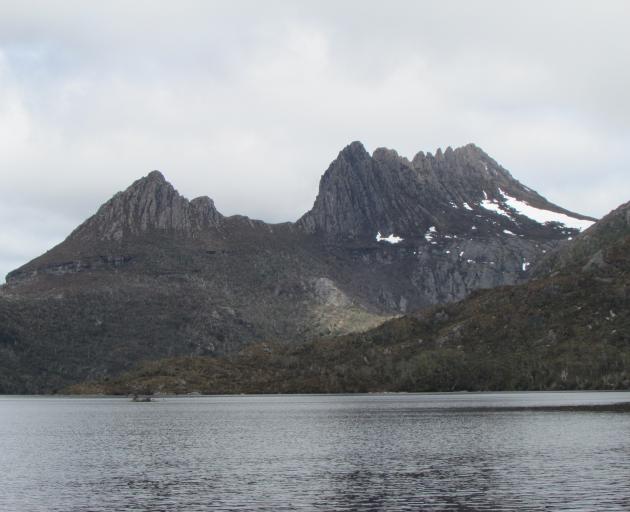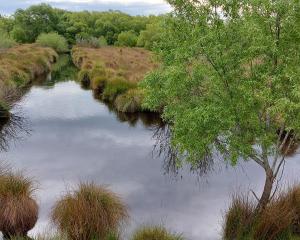
Nothing unusual about that. Several hundred international trekkers experience the trail every year.
What's unusual is that Masayuki and Misako have returned for the second time in just 12 months.
They're keen to repeat the experience of walking through a glacial landscape that has changed very little - thankfully - in almost 10,000 years.
That, and the relative solitude of a protected wilderness largely unspoilt by human intervention has enticed the Tokyo couple to repeat the six-day hiking-with-benefits trek run by the Tasmanian Walking Company.
For Masayuki it's also about making up for a lost opportunity. On the first trip the academic turned company executive forgot to take his camera on the climb up Mt Ossa, Tasmania's highest peak.
Masayuki and Misako like walking, but shun their homeland's own great trails because of their increasing popularity.
In the Cradle Mountain-Lake St Clair National Park, numbers on the track are strictly controlled during what's called the booking season (October-May).
Only 40 walkers can start the track on any one day.
Once you've outdistanced the day walkers, from Marion's Lookout after lunch on the first day, competition on the track and for the attractions nature offers is negligible.
The result is ample time to soak up awe-inspiring vistas from and of Tasmania's highest mountains, aptly described in Matthew Kneale's short-listed Booker Prize novel English Passengers as "like ruined fortresses, almost as if they were all that remained of some wondrous city, built upon a scale greater than could be aspired to by mere man, that had lain forgotten for thousands of years''.
In Neale's entertaining read, British preacher Geoffrey Wilson believes the Garden of Eden is located in Tasmania and mounts an expedition in the mid-19th century to prove his literal interpretation of Genesis.
Early settlers thought much the same thing when they first glimpsed what appeared to be grassy plains around Cradle Mountain, an abundance of water and a rich potential for mining.
Closer examination revealed an environment totally unsuited to agriculture and an ancient geology that refused to yield.
As a result, human hands have had a limited impact on the 450 plant species, including towering King Billy Pines up to 1000 years old, save for the remnant evidence of trappers, optimistic miners and an aborted attempt to build a rail line from Launceston to the west coast.
National park officials are keen to keep it that way, with overnight huts and camping sites strategically located along the 65km trail.
Our group of 11, aided by two expert guides who double as more-than-competent cooks, is taking the glamping option of five private huts.
It means the hard yards - up to 14km - come with rewards at the end of each day: private rooms; a bed; hot showers; good food, and even a glass, or two, of Tasmanian wine.
It only takes a day for the group on this trip - aged between 28 and 63 - to meld into an efficient and friendly unit.
It helps that everyone meets the "moderate fitness'' criteria for what our guides describe as the ``undulating'' ground.
That is until we face our first real test: the steep ascent to Marion's Lookout (1250m) where we are rewarded with a spectacular view of Cradle Mountain.
Over six days, we will traverse buttongrass moorlands, alpine vegetation, rainforests, rocky outcrops and even sandy beaches. Along the way, we make side trips to see waterfalls, swim in waterholes and lakes and look for fossils.
We have time also to smell the flowers, especially on the Leatherwood tree and the Mexican Guitar plant and admire the tiny and delicate Fairies Aprons.
On the fourth day, eight of us take the option to scale Mt Ossa (1617m). It's a five-hour round trip not for the faint-hearted, but one rewarded by a gob- smacking 360-degree vista.
This time Masayuki Fujimoto gets his pictures and video.
On the final day it's time to contemplate what we have done.
At first, our words don't do justice to our experience until Cameron Price - a seasoned trekker - pipes up to simply say: ``It was a privilege''.
Indeed it was.
- AAP
The writer travelled as a guest of the Tasmanian Walking Company.
If you go
GETTING THERE: Driving time to the park is about 2.5 hours from Launceston, 1.5 hours from Devonport and 4.5 hours from Hobart.
WALKING THERE: As long as you exercise regularly, are capable of walking an average of 10km for six consecutive days and are comfortable with varied terrain, you’ll be fine. Each person carries their lunch, wet-weather gear, spare clothes, thermals and warm clothing. You will need lace-up hiking boots that cover the ankle and have sturdy sole.
Each hut, discreetly located off the main trail, has six twin rooms. Six-day trips with Tasmanian Walking Company depart daily between October and May.
Each trip requires a minimum of four and a maximum of 12 guests. Price per person ranges from $3300 to $3880. Price includes return transfers
between Launceston and the walk base; all meals and beverages, including a selection of Tasmanian wines; park passes; boat transfer across Lake St Clair.












